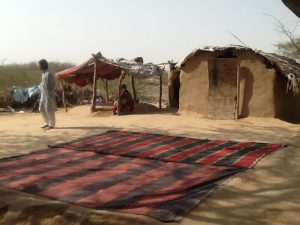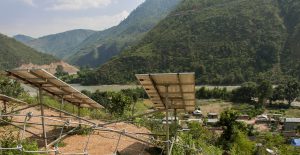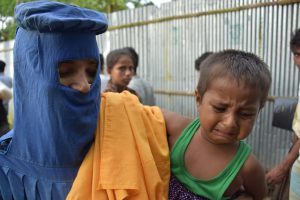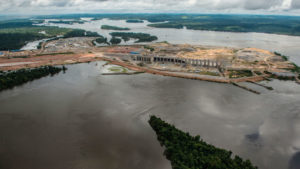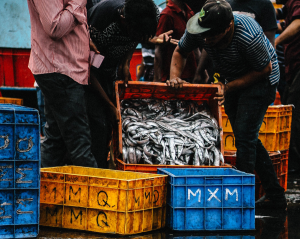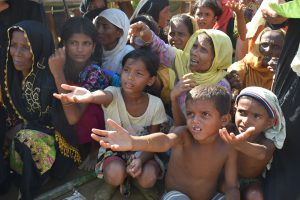For 60-year-old Muhammad Amin Naik, the completion of Baglihar hydroelectric project in 2008 marked the death knell for a close-knit community of Hindus, Muslims and Sikhs who’d been living close to the banks of Chenab river. After the dam opened, the resulting rise of the river’s waters submerged the once-bustling commercial town of 250 shops and displaced 370 families.
Naik, a school dropout, is a slightly-built man. He lives in a modest two-storey house in a hilly area overlooking the river in Pul Doda, a town in Jammu and Kashmir’s Doda district. He speaks emphatically, with a sense of urgency and a tinge of bitterness about the years he’s spent fighting for the people affected by the dam. He produces hundreds of documents about the loss of property, houses and shops which have been submitted before the courts and to several deputy commissioners and concerned ministers over the past decade.

“It was 2.30pm on 17 August 2008 when we were asked to finally vacate the houses and shops as the water level was going to rise and submerge the area,” says Naik. “Life afterwards was never the same for us.”
But Naik didn’t sit idle while the waters drowned the successful furniture business on which his livelihood depended. He got together with other people in the area and formed the Pul Doda Rehabilitation Committee. They moved their case to the court, held multiple sit-ins protests, and attended several meetings with district commissioners, bureaucrats, and chief ministers over the years to ask for compensation and relocation of displaced residents and local businesses.
Many shopkeepers and households moved in with their relatives and others lived in rented apartments while they waited for government compensation, which was disproportionate to their loss in the end. “Some families were given compensation for the houses that were submerged, but not for the land they lost when they had to move,” says Naik. “Many families spent whatever little compensation they got on paying their rent over the years.”
Displaced people were given compensation determined by rates set by a government survey of houses conducted between 2001 and 2002. “You can imagine the difference of prices in 2001 and 2008,” he says. “The price of construction materials had tripled by 2008.”

In 2008, when government authorities posted notices in the town asking people to relocate, Naik led an agitation against them. “We also observed a continuous strike for 22 days,” says Naik, recalling how he slept on the roadside for days pressing for their demands of compensation and rehabilitation. “But despite all our opposition, they went ahead with the dam construction and the entire town area was submerged.”
Government proposes, court disposes
Given the protests led by Naik and other affected people, the government had acquired agricultural land in Doda where the affected people were supposed to be rehabilitated. But the owners of the land brought a stay in the court against the relocations of Pul Doda residents on their land, and so the plan was shelved.
Syed Basharat Bukhari, the then minister for revenue, relief and rehabilitation, told the state assembly that a rehabilitation plan was prepared for the affected people by the district administration of Doda in 2008. The acquisition proceedings for the land – around 17 acres – in the Jangalwar, Khellani and Peryote villages of Doda were initiated, but the plan could not be implemented “due to various reasons including the intervention of the High Court, as well as resentment from the landowners.” Instead INR 152 million (USD 2.34 million) was paid to the displaced families of Pul-Doda, which includes the cost of structures and land, the minister told the assembly.
“I have spoken for hours with many DCs and chief ministers over the years, explaining to them how we were displaced without proper planning from the government, and the need for proper compensation and complete rehabilitation of affected people,” says Naik, emphasising that although he is illiterate, he knows how to fight for the rights of his people. “But in the end, all of that didn’t bear any fruit. The DCs, chief ministers and governments kept changing, but our people here continue to be displaced and to wait to live in their own houses again.”
The case is still ongoing in a high court in Jammu. Despite close to a decade of struggle, during which there has been little progress, Naik and others affected will continue to fight for their rights. “We have spent our own money to get lawyers to strongly put forward our case in the courts,” he says.
Long struggle, no success
Over the years, many of Naik’s old associates and others part of the rehabilitation committee have passed away, while others have shifted permanently to other towns. Many of them look up to Naik to fight for their rights and he feels bad that despite all their efforts, he hasn’t been able to take the case to its conclusion and get justice and compensation for all the affected families.
The town of Pul Doda is still submerged but on some days, the water level dips and damaged houses and shops, part of a temple and a mosque and the remains of a bus stop can be seen from the river bank. There’s also an old, low-lying bridge, half of which remains under water. These remains stand testimony to what used to be a lively town and busy intersection, bustling with commercial activities and travellers.
“We didn’t get justice,” he says in a disappointed tone while he gathers his papers, case files and court documents before putting them back in his briefcase. “I don’t have much hope of getting justice now.”
![<p>View of Pul Doda from the road above, a half submerged structures of a mosque, a temple and a few houses can be seen [image by: Majod Maqbool]</p>](https://dialogue.earth/content/uploads/2017/10/A-view-of-the-Pul-Doda-area-from-the-road-above.-The-half-submerged-structures-of-a-mosque-a-temple-and-a-few-houses-can-be-seen-here..jpg)

